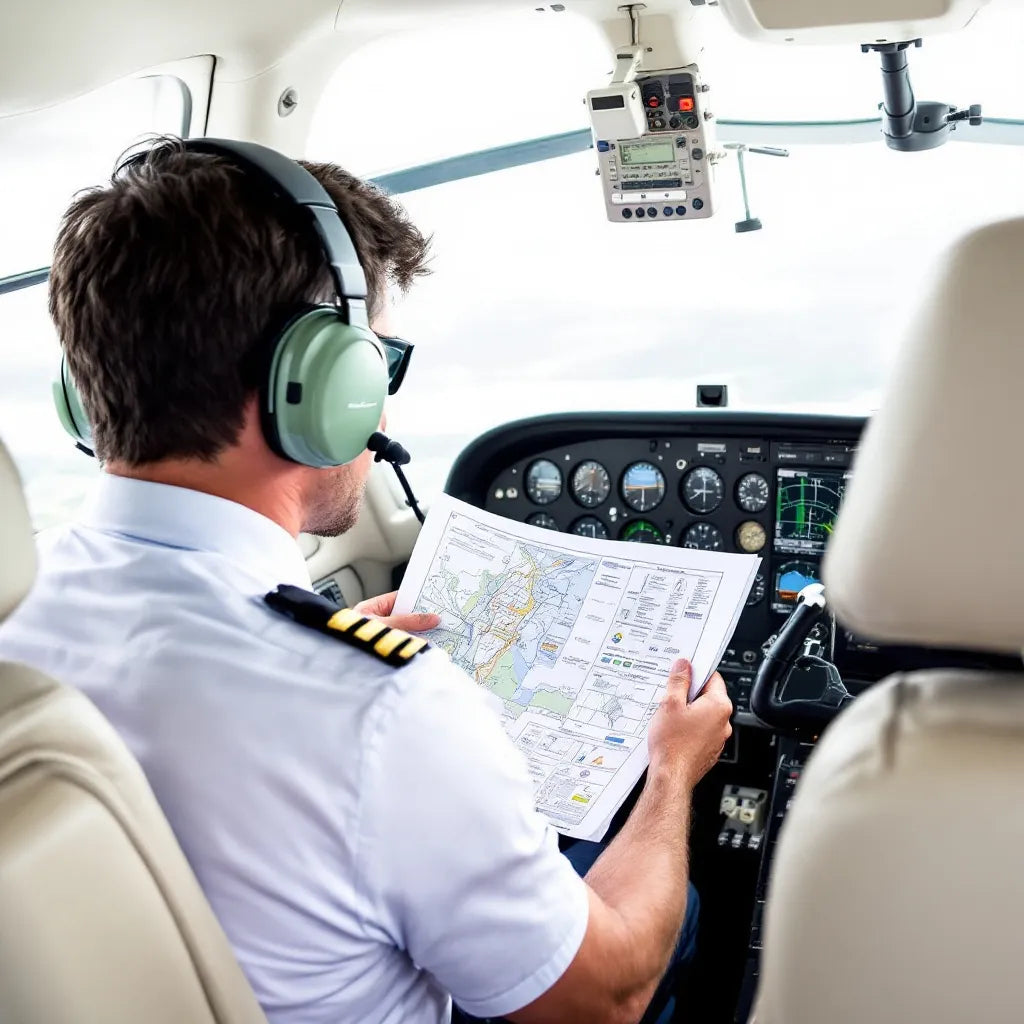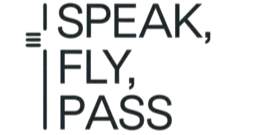
Cost to Get Pilot License: A Financial Guide
Share
Embarking on a journey to become a pilot is an exciting prospect, but understanding the financial commitment is crucial before taking flight. The cost to get a pilot license varies significantly based on numerous factors including license type, training location, and individual progress rate. For aviation enthusiasts and aspiring pilots, having a clear financial roadmap is essential for planning this significant investment in your future. This comprehensive guide breaks down all the costs associated with obtaining a pilot license in 2025, helping you navigate the financial aspects of your aviation journey.
Understanding Different Types of Pilot Licenses and Their Costs
The aviation industry offers various pilot licenses, each designed for different purposes and carrying unique cost implications. Your training budget will largely depend on which license you pursue.
Private Pilot License (PPL)
The PPL is the starting point for most aspiring pilots. It allows you to fly for personal recreation and carry passengers, but not for compensation.
Minimum Flight Hours Required: 40 hours (though most students complete 55-75 hours)
Timeframe: 3-6 months (part-time training)
Commercial Pilot License (CPL)
The CPL permits pilots to fly for compensation or hire, opening doors to professional aviation careers.
Minimum Flight Hours Required: 250 hours total time
Timeframe: 6-12 months beyond PPL (varies by training intensity)
Airline Transport Pilot License (ATPL)
The ATPL is the highest level of aircraft pilot certification and is required to serve as captain on commercial airlines.
Minimum Flight Hours Required: 1,500 hours total time
Timeframe: Several years of progressive experience
Detailed Cost Breakdown of Flight Training
Understanding the specific components that constitute your training expenses provides clarity and helps with financial planning.
| Expense Category | Typical Cost (PPL) | Notes |
|---|---|---|
| Aircraft Rental | $150-250/hour | Varies by aircraft type and location |
| Flight Instructor | $60-80/hour | Additional to aircraft rental during instruction |
| Ground School | $400-1,500 | Online options often less expensive than in-person |
| Written Exam Fee | $160-175 | FAA knowledge test fee |
| Check Ride Fee | $600-800 | Practical exam with designated examiner |
| Training Materials | $300-500 | Books, charts, apps, and supplies |
| Medical Certificate | $100-200 | Required before solo flight |
As highlighted in recent aviation training analyses, costs have nearly doubled compared to a decade ago. This significant increase is primarily attributed to rising insurance premiums, inflation affecting aircraft maintenance, and fuel price volatility.
Average Costs by Region
Training costs can vary substantially depending on geographic location, primarily due to differences in operating costs, regional economic factors, and market competition.
Urban vs. Rural Training Environments
Flight schools in major metropolitan areas typically charge 15-30% more than those in rural settings. However, urban areas often provide greater access to advanced training facilities and career networking opportunities.
Highest Cost Regions (US)
- California (Los Angeles, San Francisco): $15,000-$20,000 for PPL
- New York/New Jersey: $14,500-$19,000 for PPL
- Florida (Miami area): $13,500-$18,000 for PPL
- Washington (Seattle area): $13,000-$17,500 for PPL
More Affordable Regions (US)
- Midwest (Kansas, Nebraska): $9,500-$14,000 for PPL
- Southern states (excluding Florida): $10,000-$15,000 for PPL
- Mountain states: $11,000-$15,500 for PPL
- Rural airports generally: 10-25% less than state averages
International training options exist as well, with countries like South Africa, Australia, and certain European nations offering competitive rates for quality training. However, licensing transfer requirements should be carefully researched if you plan to fly in your home country afterward.
Financing Options for Pilot Training
Given the substantial investment required, many aspiring pilots seek financial assistance to fund their training.
Traditional Financing Methods
- Personal Loans: Many credit unions and banks offer education loans that can be applied to flight training.
- Credit Cards: While convenient, high interest rates make this an expensive option unless paid quickly.
- Home Equity Lines: Lower interest rates but puts your home at risk if payments cannot be maintained.
- Family Investment: Some pilots establish formal arrangements with family members who invest in their training.
Aviation-Specific Financing
Several lenders specialize in aviation training financing, offering terms tailored to the unique nature of flight education. These often feature more flexible repayment schedules aligned with aviation career progression.
When considering flight school programs, it's essential to thoroughly research their reputation and track record. In a cautionary example from April 2025, twenty-nine former students filed a lawsuit against United Airlines and its flight school over fraud allegations, underscoring the importance of due diligence before committing financially to any training program.
How Training Duration Affects Overall Costs
The time it takes to complete your training has a direct impact on your total investment. Training intensity and consistency are key factors in managing costs effectively.
Accelerated vs. Part-Time Training
Accelerated programs typically cost more upfront but can result in lower total expenses due to higher retention and fewer required hours. Part-time training stretches costs over a longer period but might require more total hours due to skill erosion between lessons.
| Training Approach | Timeframe (PPL) | Cost Implications |
|---|---|---|
| Intensive (4-5 days/week) | 4-8 weeks | Higher short-term costs, potentially lower total hours (45-55) |
| Moderate (2-3 days/week) | 2-4 months | Balanced approach, moderate retention (55-65 hours) |
| Part-time (1 day/week) | 6-12 months | Lower monthly costs, potentially higher total hours (65-80) |
| Intermittent (inconsistent) | 12+ months | Highest total costs due to repeated training (70-100+ hours) |
Research shows that students training at least twice weekly typically achieve their license with 15-20% fewer flight hours than those flying less frequently, representing significant cost savings.
Additional Expenses Beyond Tuition and Flight Hours
Many prospective pilots focus solely on aircraft rental and instruction costs, overlooking several necessary additional expenses that can add significantly to the total investment.
Essential Equipment and Materials
- Headset: $200-1,200 depending on quality and noise-cancellation capabilities
- iPad or Tablet: $400-1,000 for electronic flight bag use
- Flight Planning Software: $75-300 annually for apps like ForeFlight or Garmin Pilot
- Aviation Calculators: $50-100 for specialized flight calculators
- Logbook: $15-75 depending on type (paper vs. premium electronic)
Testing and Certification Fees
Beyond the basic examinations, additional costs may include:
- Knowledge Test Prep Courses: $200-400
- Check Ride Preparation: $400-800 (additional training hours)
- Aircraft Rental for Check Ride: $300-500
- Retests: Additional fees if you need to retake exams
These supplementary costs typically add $1,500-3,000 to your total investment and should be budgeted from the beginning of your training journey. For professional advice on structured aviation language preparation, consider resources like comprehensive aviation English guides to help with technical terminology mastery.
Comparing Costs of Different Flight Schools
Not all flight schools are created equal, and the cheapest option isn't always the most cost-effective in the long run.
Types of Training Providers
Part 61 Schools
- More flexible curriculum
- Often lower initial costs
- Pay-as-you-go structure
- Variable quality of instruction
Part 141 Schools
- Structured FAA-approved curriculum
- May require fewer minimum hours
- Usually higher upfront costs
- More consistent training standards
When comparing flight schools, look beyond the advertised hourly rates. Request a comprehensive breakdown of all costs, including:
- Block time discounts (if available)
- Membership or club fees
- Insurance surcharges
- Fuel surcharges (which can fluctuate)
- Cancellation or rescheduling policies
- Completion rates and average time to certification
Scholarships and Grants for Aspiring Pilots
Financial assistance opportunities can significantly reduce your out-of-pocket expenses for flight training.
Aviation-Specific Scholarships
Numerous organizations offer funding specifically for aspiring pilots:
- Aircraft Owners and Pilots Association (AOPA): Offers multiple scholarships annually
- Experimental Aircraft Association (EAA): Provides various scholarships through their Air Academy
- Women in Aviation International: Distributes over $780,000 in scholarships annually
- Organization of Black Aerospace Professionals: Offers multiple aviation scholarship opportunities
- National Business Aviation Association: Provides scholarships for various aviation career paths
GI Bill and Military Benefits
For veterans and active military personnel, various VA education benefits can be applied to flight training programs that meet eligibility requirements.
Cost of Maintaining a Pilot License
Obtaining your license is just the beginning—ongoing costs to maintain currency and proficiency should factor into your long-term aviation budget.
Regular Requirements
- Flight Reviews: Required every 24 months ($200-400)
- Medical Certification: Frequency varies by class ($100-200 per examination)
- Currency Requirements: Minimum flight activity to carry passengers
- Annual Aircraft Rental: $2,000-5,000 for minimum proficiency flying
- Instrument Proficiency Checks: For instrument-rated pilots ($300-500)
Professional Development
Career pilots must budget for additional recurring expenses:
- Advanced Ratings: Continued education costs
- Type Ratings: $10,000-30,000 for specific aircraft qualifications
- Recurrent Training: Required by many employers
- Aviation English Proficiency: For international operations, specialized aviation English training programs may be necessary for ICAO compliance
Impact of Aircraft Rental Rates
Aircraft rental constitutes the largest portion of most training budgets, and rates continue to rise due to multiple factors.
Factors Affecting Rental Rates in 2025
Several key developments have contributed to the significant increase in aircraft rental prices:
- Rising Insurance Costs: Aviation insurance premiums have increased 30-50% since 2020
- Maintenance Expenses: Parts and qualified mechanic services cost more
- Fuel Considerations: The evolving landscape of aviation fuels, including the growth of sustainable aviation fuel markets, impacts operational costs
- Aircraft Scarcity: Training fleet replacement has slowed, creating higher demand for existing aircraft
- Avionics Upgrades: Modern glass cockpit technology increases aircraft value and rental rates
Strategies to Minimize Aircraft Rental Impact
Several approaches can help reduce the aircraft rental portion of your training budget:
- Block Time Purchases: Many schools offer 5-15% discounts for prepaying larger blocks of flight time
- Flying Club Memberships: Can reduce hourly rates by $20-50 compared to standard FBO rentals
- Off-Peak Flying: Some schools offer discounted rates during less popular times
- Simulator Utilization: Maximize simulator time for procedures training (much cheaper than aircraft time)
- "Chair Flying": Mentally rehearsing procedures reduces in-air learning time
Planning Your Pilot Training Budget: Essential Considerations
Creating a realistic budget requires accounting for various contingencies and understanding the complete financial picture.
Building a Reserve Fund
Experienced flight instructors recommend budgeting an additional 15-20% beyond estimated costs to account for:
- Weather delays extending your training timeline
- Potential need for additional instruction in challenging skill areas
- Equipment replacement or upgrades
- Examination retakes if necessary
- Fuel surcharge increases during your training period
Return on Investment Considerations
For career-oriented pilots, analyzing the long-term financial return helps put the significant initial investment in perspective:
- First-year commercial pilots typically earn $40,000-$60,000
- Mid-career regional airline pilots earn $80,000-$130,000
- Senior major airline captains earn $200,000-$350,000+
- Corporate and private pilots' earnings vary widely by employer and experience
While the upfront costs are substantial, the lifetime earning potential for professional pilots typically represents an excellent return on the initial training investment, particularly given the current and projected pilot demand.
Understanding the complete financial picture of flight training empowers aspiring pilots to make informed decisions about their aviation journey. By researching thoroughly, budgeting realistically, and exploring all available financing and scholarship opportunities, the dream of flight can be achieved regardless of your starting financial position. For those pursuing aviation careers internationally, specialized resources like those offered by Speak, Fly, Pass can provide valuable support for the technical language proficiency required in global aviation operations.
